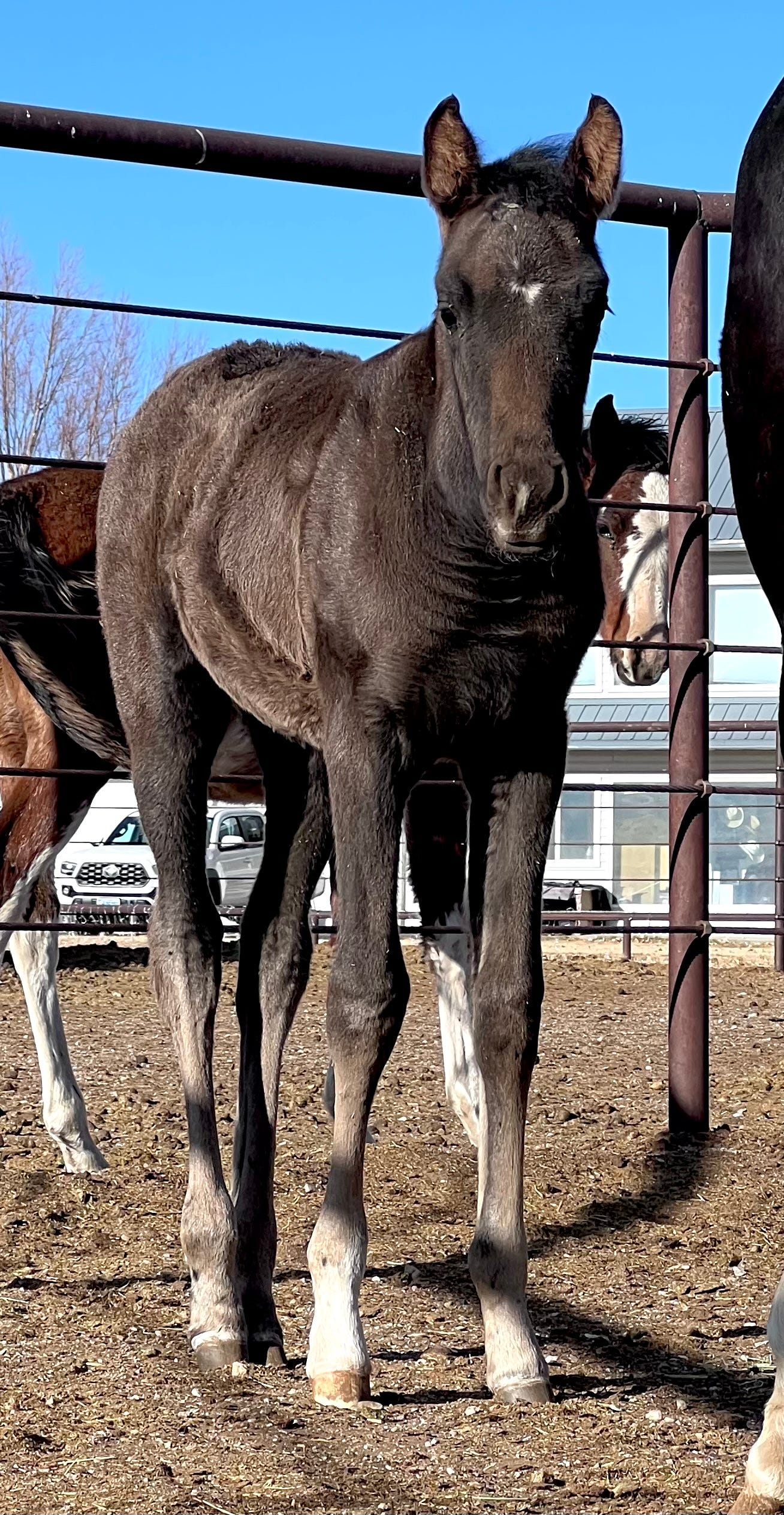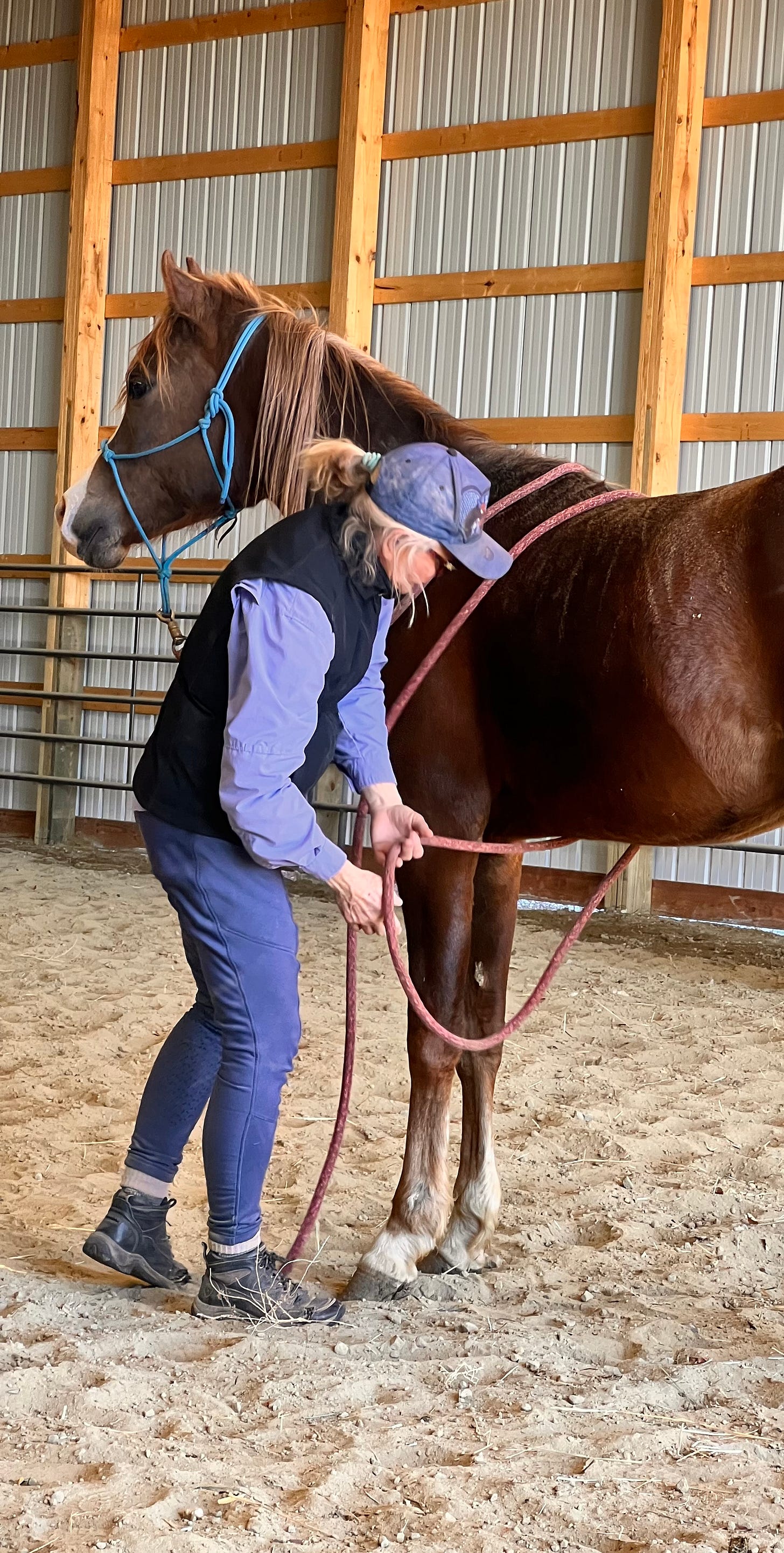Perhaps the most important question that should be answered when purchasing a horse is, “How was this horse raised and trained?”
We’ve seen many a horse dream crushed and horses in kill pens because the horse bought was fearful/distrustful of humans, never fully tamed, and/or improperly trained, rendering it dangerous to be around or ride with problems insurmountable for most people to overcome. Is that a risk worth taking?
Whenever a foal is born or a new horse is added to our farm, the first goal of our interactions with that horse is tameness (relaxation). Tameness followed by basic ground training is the foundation that leads to future success.
Our horses go through the process of taming and training, and at whatever level they’ve attained with us, are ready for the next step.
These aren’t chance events, they reflect the commitment, dedication and skill that I, Isabelle Farmer and my husband Steve Hugus, bring to the HAAP farm horses.
It is the essence of our prey/predator world that foals (and many horses) instinctually see us as an existential threat to their well-being. All foals are variably skeptical of our intentions. The first goal of taming is convincing each of these young prey animals that we, as predators, have no intention of eating them.
For older horses, there can be layers of negative interactions that make relaxation even more difficult to achieve.
As simple as that goal sounds, it has many moving parts. Here are but a few.
How good are we at communicating in the horse’s language, which is primarily body language?
What is each horse’s level of skepticism and fear?
How persistent and committed are we to getting the horse to see us as a positive influence in their lives?
Can we commit to the time this takes, understanding that each horses’s taming timeline will be different?
Foals are a clean slate. Not only do we want them relaxed in our presence, we don’t want to create worries they don’t already have. Too many horse buyers bring their horse home only to discover it has objections or concerns that only humans could have created or worsened.
There is a potentially endless list of these, but some of the most common ones are:
Picking up their feet
Head/ear shyness
Cinchiness
Fear of trailer loading
Dullness to aids
Reactivity to aids
Difficulty getting haltered or “caught”.
Logically, why wouldn’t we want these issues dealt with when horses are small and young? By extension, this should be what prospective horse buyers want to buy. The initial price of a horse should reflect how much training won’t be needed post purchase.
If you have questions for me about any of my posts, please feel free to contact me at isabellefarmer@gmail.com or click here: HAAP Farm Facebook page.
For more information about the amazing horses that have been and are being bred on the HAAP Farm, click here: HAAP farm web page.







Having purchased my first yearling last year, this really spoke to me! I’ve known him since he was just a few weeks old, and starting him myself has been one of the greatest joys of my life. It’s such a a joy to start with the relationship first, focusing on relaxation and trust along the way. Thank you for this thoughtful post.